 Health
Health
 Personal Protection Equipment (PPE) (Gloves, Masks, ...) and Hand Hygiene
Personal Protection Equipment (PPE) (Gloves, Masks, ...) and Hand Hygiene
Don's Home
 Health
Health
 Personal Protection Equipment (PPE) (Gloves, Masks, ...) and Hand Hygiene
Personal Protection Equipment (PPE) (Gloves, Masks, ...) and Hand Hygiene
| Contact | file:///Users/donmcbride/Sites/donsnotes/health/images/cough-particle-transport.jpg file:///Users/donmcbride/Sites/donsnotes/health/images/mask.png
| Other Pages: Coronavirus statistics | Coronavirus Safety - Prevention - Treatment | Personal Protection Equipment | Coronavirus Facts | |
I started this looking at masks for wildfire smoke protection in 2018. I knew about gloves for HIV protection from my EMT training.
With the Coronavirus Disease 2019 (COVID-19) outbreak in 2020 PPE now includes everything from gloves to hazmat suits for medical personnel.
This is a work in progress. Recommendations on nose-mouth coverings for Covid-19 keep changing.
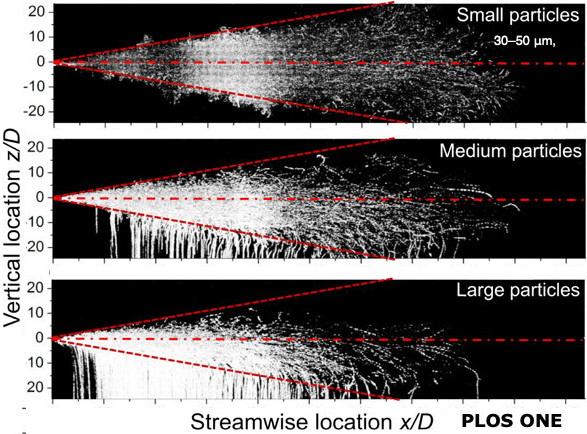
Source: Human Cough as a Two-Stage Jet and Its Role in Particle Transport | PLOS ONE
This is a theoretical article about droplet dispersion. I started with it because I liked the illustration. Their intro was good though, showing the complexity of a cough.
"Thousands of droplets per respiration can be released during breathing, coughing and sneezing. Once exhaled, droplets evaporate and become droplet nuclei. These droplets and droplet nuclei can contain elements such as sodium, potassium and chloride in solutes; DNA, lipids, glycoproteins and proteins in suspended insoluble solids; and, of course, infectious pathogens."Sounds impressive, but their tests used water, dyed microscope glass beads and other stuff not real saliva, mucus, or in layman's terms snot. It was fine for the purpose of their experiment.
I liked the MythBusters Episode: Flu Fiction.
They mixed cherry drink powder into snuff to irritate their mucous membranes and force themselves to sneeze over a 30-foot-long strip of white paper.
The myth was that a sneeze can travel up to a distance of 30 ft.
They achieved a maximum distance of 17 ft. Busted!
So where does the 6 ft rule come from?
See Is 6 feet enough space for social distancing? | Live Science, March 28, 2020.
They say "The 3-6 foot rule is based on a few studies from the 1930s and 1940s, which have since been shown to be wrong".
I use the 6 ft rule but never try to face anyone that's closer than some distance like 15 ft.
In the cloud: How coughs and sneezes float farther than you think | MIT News April 8
I've heard several news reports and seen a bunch of web pages on the subject and they're confusing. This doesn't tell you what to do but gives you some information to be able to evaluate what you hear from the talking heads.
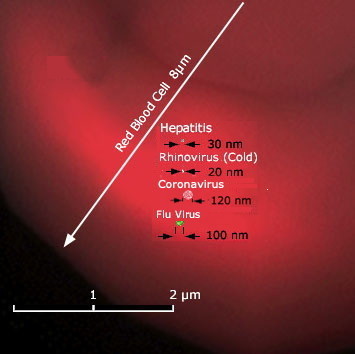
A micron (µm) is 1/1000 of a mm or 1/1,000,000 of a meter.
A nanometer (nm) is 1/1000 of a µm. 30 nm = 0.03 µm

This diagram is misleading.
Viruses cannot travel through the air by themselves.
They can be in a complex spray of saliva and mucus droplets from sneezing which are from 10-100 microns (µm) in size
Larger droplets (5 - 50 µm) from a sneeze can travel 3-6 feet.
Smaller droplets (or aerosols) -- < 5 µm -- can stay suspended in the air and travel through ventilation systems.

Source: Infections by Bio-aerosols | Louisiana Dept. of Health
"Face shields are able to block the initial forward motion of the exhaled jet, however, aerosolized droplets expelled with the jet are able to move around the visor with relative ease," said Manhar Dhanak, Ph.D., department chair, professor, and director of SeaTech, who co-authored the paper with Siddhartha Verma, Ph.D., lead author and an assistant professor; and John Frankenfeld, a technical professional, all within FAU's Department of Ocean and Mechanical Engineering. "Over time, these droplets can disperse over a wide area in both lateral and longitudinal directions, albeit with decreasing droplet concentration."
They also compared droplet dispersal from a regular N95-rated face mask to one equipped with an exhale valve. These masks are to protect the user from breathing in airborne particles from others as opposed to surgical masks and cloth masks which are to protect others from your exhaled particles.
As expected the exhalation port significantly reduces the effectiveness of the mask as a means of source control.
Once released into the environment, the aerosol-sized droplets get dispersed widely.
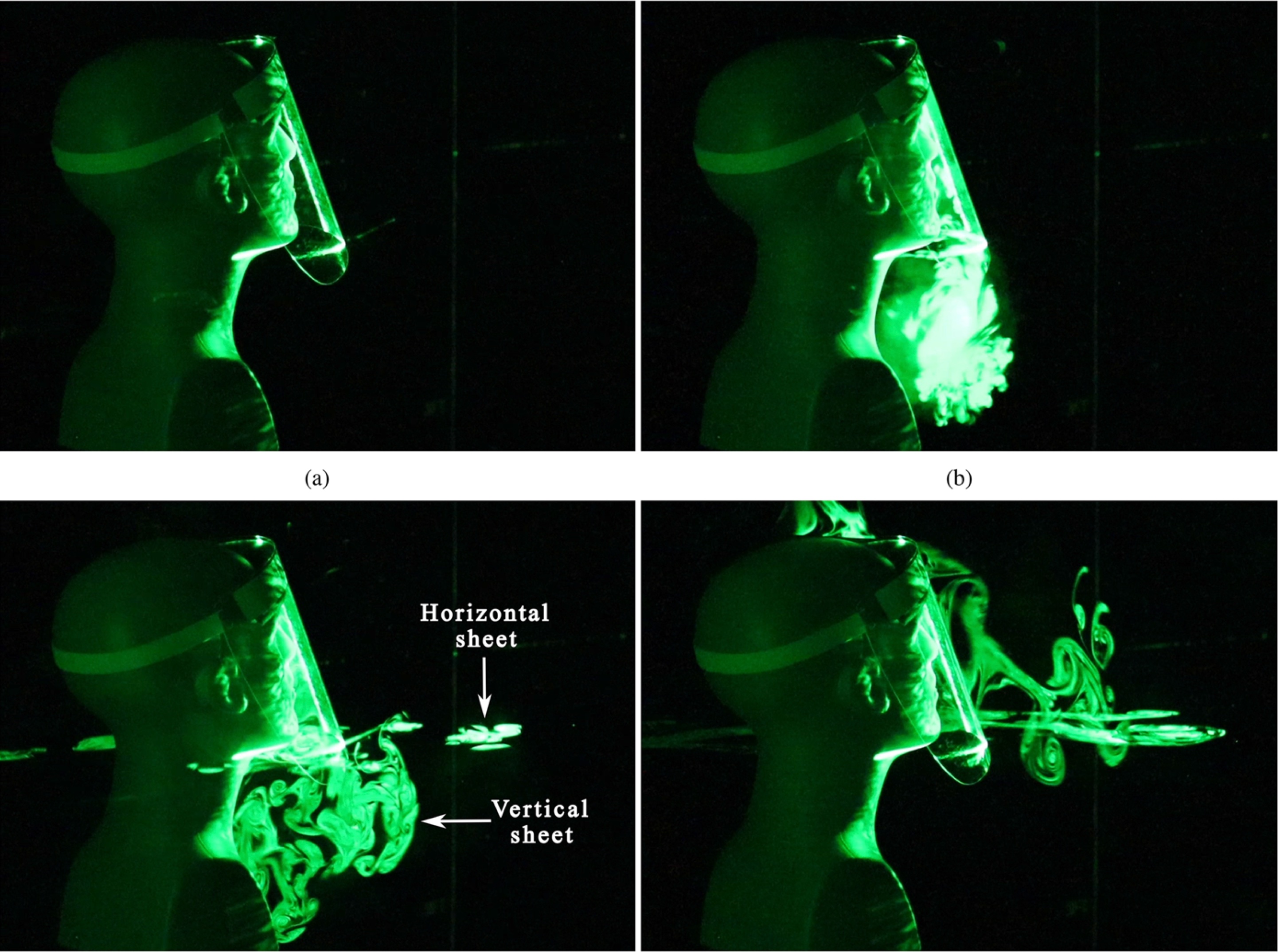
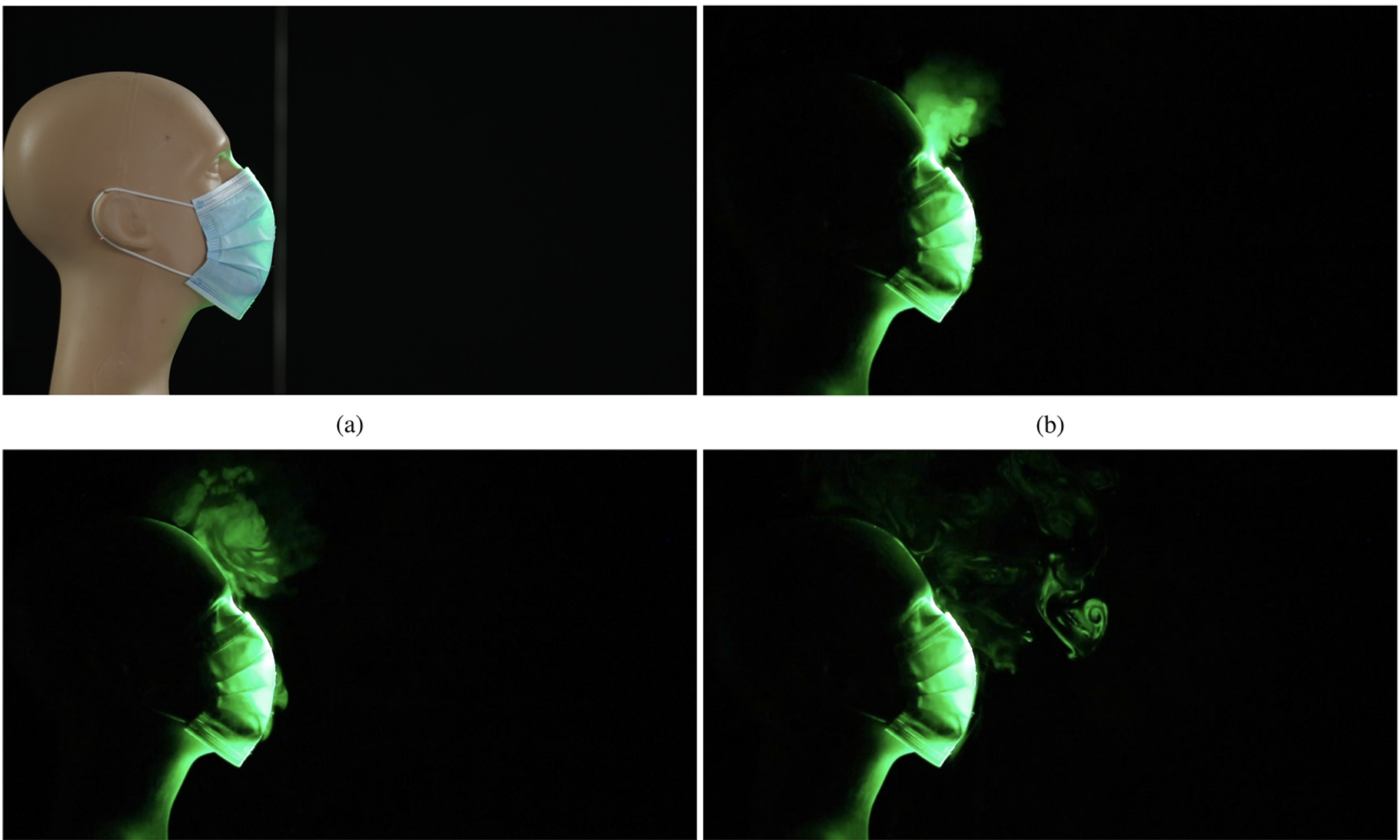
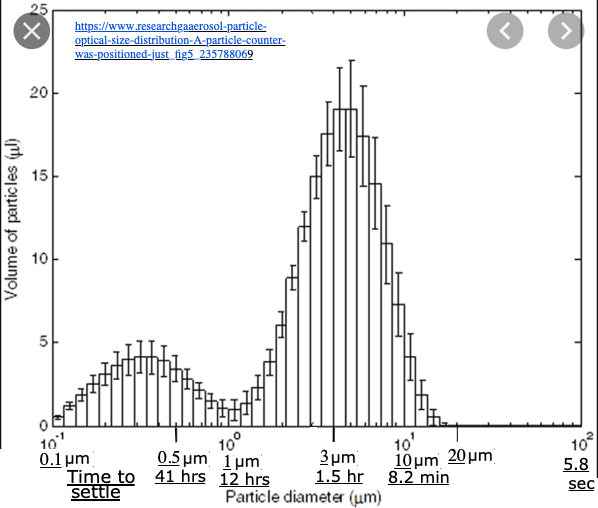
Settling Time numbers from
Generation and Behavior of Airborne Particles (Aerosols) | NIOSH
One argument against the masks was they make you more likely to touch the mask and deposit virus from your hand.
Type:

N95 masks fit better and can trap smaller particles.
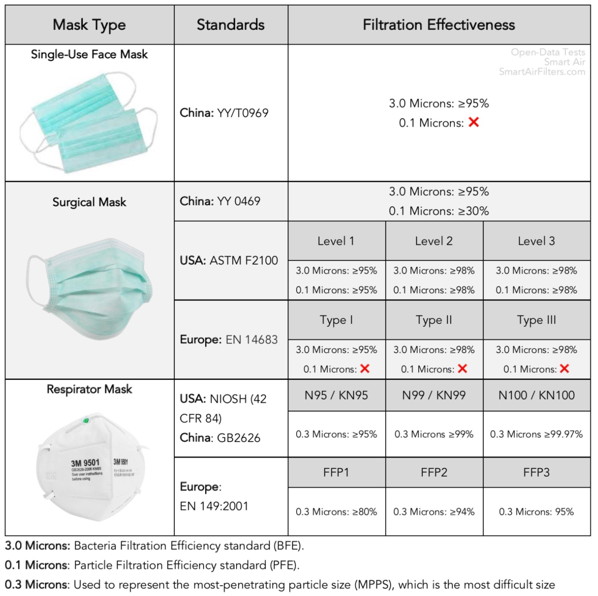
Can DIY Masks Protect Us from Coronavirus? - Smart Air Filters tests showed,
They can be effective see results below.
Moisture and time had very little impact on effectiveness for any of the masks. In fact, the homemade masks actually captured 5.8% more virus-sized particles after 3 hours. Thus, wearing them for several hours seems to have little impact on their effectiveness.
Cleaning your cloth mask
You should have at least 2 masks and change them every day.
"Normal laundering of washable masks made of clothing fabric, including drying the masks on high heat, should be sufficient to remove any appreciable viral inoculation of novel coronavirus given what is known about its survivability on surfaces,"
Popular Science says,
Surgical masks are made out of a really soft cloth that's just a small bit stronger than a paper towel, and its components can be heavily damaged by some of the agents that you might use in the home.
You can put them in boiling water for 5 minutes.
Water heated to 140 degrees Fahrenheit has proven effective at degrading most viruses, and both the World Health Organization and the UK’s National Health Service recommend this temperature for treating contaminated clothes and fabrics. But because a 140-degree shower would burn your skin, most people’s water heaters are set to 120 degrees. “A lot of viruses will be inactivated at that temperature, but they won’t completely be obliterated,”
If there are still any pathogens the machine didn’t kill during the washing cycle, you can be sure you’ll finish them after five to 10 minutes at high heat in the dryer.
You can also your face masks for five minutes in a solution of one teaspoon of bleach for every quart of hot water.
See List N: Disinfectants for Use Against SARS-CoV-2 | Pesticide Registration | US EPA
How to clean your fabric face mask to help prevent getting the coronavirus
Effectiveness on .02-1 micron (µm) particles: Dish cloth mask 60% of particles captured. Surgical Mask 79% FFFP2 (N95) 98.9% They are 15% less effective on kids
I couldn't find any data on efficiency of homemade cloth masks.
According to one small study, they were three times less effective than surgical masks.
homemade face covering | CDC
How to make a mask without sewing (DIY video)
How NOT to Wear a Mask - The New York Times
| Grain of Sand | 80-2000 µm |
| Cotton Fiber | 15 - 30 µm |
| Human Hair | 30 - 200 µm |
| Settling Dust | 10 - 100 µm |
| Inhalable Dust | 8.0 - 12 µm |
| Respirable Dust | 1.0 - 5.0 µm |
| Smoke Particle | 0.01 - 1.0 µm |
| Coronavirus | 0.12 µm | Flu virus | 0.1 µm |
| Hepatitis | 0.03 µm |
| Rhinovirus (Cold) | 0.02 µm |
See Pathogen size
and Small Things
Respirator Smoke and Dust masks
Subjects with more elastic saliva, the expelled fluid tended to stay in filament form longer, forming beads along the filaments that eventually slid off as droplets.
Source: Sneezing produces complex fluid cascade, not a simple spray | MIT News, 2016 Lydia Bourouiba, Ph.D
"The gas cloud and its payload of pathogen-bearing droplets of all sizes can travel 23 to 27 feet." Bourouiba says in a JAMA Article.
Dr. Anthony Fauci of The Coronavirus task force says,
'I was disturbed by that report because that is misleading. That means all of a sudden, the 6ft thing doesn't work,' Fauci said. 'That is a very, very robust, vigorous, "atchoo" sneeze and that's not what we're talking about.'